▼ National Telecom Policy 2012 aims for 600 million connections by 2020 [07-31-17]
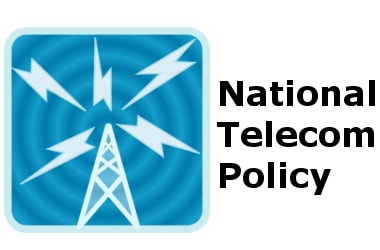 The Minister for Communications Shri Manoj Sinha said that as per information provided by Telecom Regulatory Authority of India (TRAI), there were 422.19 million broadband subscribers and the internet penetration (internet subscriber per 100 populations) was 32.86% in the country as on 31st March 2017. The Minister for Communications Shri Manoj Sinha said that as per information provided by Telecom Regulatory Authority of India (TRAI), there were 422.19 million broadband subscribers and the internet penetration (internet subscriber per 100 populations) was 32.86% in the country as on 31st March 2017.
National Telecom Policy-2012 envisages 600 million broadband connections by the year 2020.
Government has planned the BharatNet project to provide 100 Mbps broadband connectivity to all Gram Panchayats (approx. 2.5 lakh) in the country.
Under first phase of the project, 1 lakh Gram Panchayats (GPs) are to be connected by laying underground Optical Fibre Cable(OFC) which is under implementation.
Under Phase-II, targeted to be completed by March 2019, connectivity will be provided to remaining 1.5 lakh GPs in the country using an optimal mix of underground fibre, fibre over power lines, radio and satellite media.
Provision of last mile access to the network and broadband service provisioning shall be through Wi-Fi or any other broadband access technologies in all 2,50,000 GPs in the country.
As on 23.07.2017, the status of implementation of BharatNet is as under:-
No. of GPs where OFC laying is completed : 100,299 GPs
Optical Fibre Cable laid : 221,925 Kms
Broadband Connectivity provided in GPs : 25,426 GPs
|
▼ SIDBI starts merchant banking operations [07-27-17]
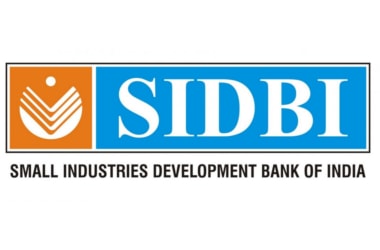 Small Industries Development Bank of India (SIDBI) has started full-fledged merchant banking operations to benefit the expanding number of growth-oriented micro, small and medium enterprises (MSMEs). Small Industries Development Bank of India (SIDBI) has started full-fledged merchant banking operations to benefit the expanding number of growth-oriented micro, small and medium enterprises (MSMEs).
This is especially those with a strong technology and innovation quotient.
The initiative is aimed at enhancing the access of MSMEs to the capital markets, including the SME Trading Platform and Institutional Trading Platform.
SIDBI has supported over 125 venture capital funds and thus can provide support for listing the investee companies on SME exchanges through its merchant banking operations.
SIDBI, by virtue of direct credit assistance for nearly two decades, also has a good number of such MSMEs that would like to list in the SME exchanges.
It is this strength that SIDBI would like to utilise by connecting the right investment opportunity to the funds and also would like to help these funds with exit opportunities at attractive valuations.
A significant increase in the number of venture funds active in the start-up/ MSME space in the past two years will create a large pipe of fast growing companies seeking public markets.
This will prove beneficial to the SME exchange as well as investors seeking liquidity or exit.
|
▼ GST Saga case study launched by FM [07-26-17]
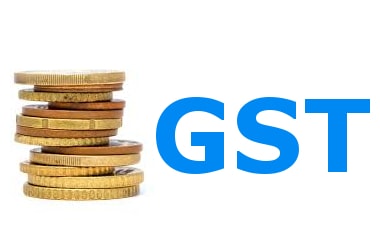 A Case Study on the birth of the Goods and Services Tax (GST) in India – “The GST Saga: A Story of Extraordinary National Ambition” was released on 25th July 2017 by the Union Finance Minister, Shri Arun Jaitley in his office in North Block in the national capital. A Case Study on the birth of the Goods and Services Tax (GST) in India – “The GST Saga: A Story of Extraordinary National Ambition” was released on 25th July 2017 by the Union Finance Minister, Shri Arun Jaitley in his office in North Block in the national capital.
In view of the successful roll-out of the GST on 1 July 2017, it was felt that there was a need for the public to know of the story of how GST evolved, its timeline, the different stakeholders involved and how it eventually culminated in its inauguration in the Central Hall of the Parliament of India on the midnight of 30th June,2017 and 1st July, 2017 by the President and Prime Minister of India.
This case study accordingly captures the entire journey of GST right from its ideation in the Kelkar Task Force Report in 2003.
Other salient features such as the dates on which the SGST Laws were enacted in the 31 States, peculiarity of the Indian GST model, how the fitment of rates was done and the IT backbone of GST have also been addressed in the case study.
This makes it a concise yet comprehensive repository of the GST story.
|
▼ NTFAP to improve ease of doing business [07-24-17]
National Trade Facilitation Action Plan (NTFAP) aims to align border procedures with international best practices and improve Ease of Doing Business.
It would not only ensure compliance with the Trade Facilitation Agreement (TFA) but would also give impetus to trade facilitation.
Action Plan gives a time bound map, not only for implementing TFA, but also for India’s initiatives for trade facilitation and Ease of doing Business which goes beyond TFA.
The Action Plan was released by the Finance Minister Shri Jaitley on 21st July 2017.
WCO appreciated the various initiatives taken by the Indian Customs to facilitate trade particularly the release of the National Trade Facilitation Action Plan (NTFAP).
While praising the massive reforms undertaken by the present Government in the Indian Taxation System including implementation of GST, WCO indicated that the efforts made with regard to outreach and capacity building before implementation of GST in India can be emulated by many other countries.
WCO is working with G-20 on illicit financial flows.
|
▼ India fourth fastest growing economy: World Bank [07-19-17]
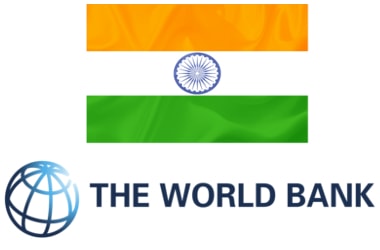 India is the world’s fourth fastest growing economy in the world thus far in 2017. India is the world’s fourth fastest growing economy in the world thus far in 2017.
That’s according to the World Bank’s latest edition of Global Economic Prospects.
For 2017, India’s economy is expected to advance 7.2%.
That’s slightly above the country’s long-term growth.
GDP Annual Growth Rate in India averaged 6.12% from 1951 until 2017, reaching an all time high of 11.40% in the first quarter of 2010 and a record low of -5.20% in the fourth quarter of 1979.
The Indian economy has benefited from a stable macroeconomic environment of low inflation and interest rates.
This has helped shake off a temporary slow-down in consumer spending and a drop in investment that followed the demonetization program back in November 2016 - which took 86% of the country’s currency out of circulation.
India’s economy has also benefited from ongoing market reforms that have improved competitiveness.
For 2016-17, India scored 4.52 points out of 7, according to Global Competitiveness Report published by the World Economic Forum, slightly above its ten year average of 4.33 points.
That helped the country climb to rise to the position as the 39th most competitive nation in the world out of 138 countries ranked in the report.
The Competitiveness Rank in India averaged 52.73 from 2007 until 2017, reaching an all time high of 71.00 in 2015 and a record low of 39.00 in 2017.
Improved competitiveness, in turn, has helped narrow the country’s current account deficit to 0.70% of the country’s Gross Domestic Product in 2016.
Current Account to GDP in India averaged -1.40 percent from 1980 until 2016, reaching an all time high of 2.28% in 2003 and a record low of -4.80% in 2012.
Financial markets have taken note. The iShares S&P India have gained 20.76 percent over the last twelve months.
|
▼ IBBI now has powers to start probe [07-18-17]
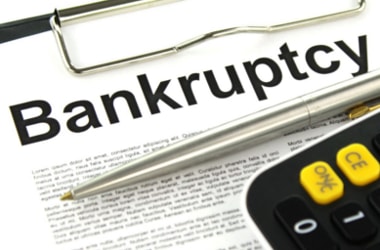 The Insolvency and Bankruptcy Board of India (IBBI) has powers to start probe against service providers registered with it without intimating them, according to new regulations. The Insolvency and Bankruptcy Board of India (IBBI) has powers to start probe against service providers registered with it without intimating them, according to new regulations.
IBBI, which is implementing the Insolvency and Bankruptcy Code (IBC), has notified the regulations for inspection and investigation of service providers registered with it.
Insolvency professional agencies, professionals, entities and information utility are considered as service providers under the Code.
The Code, which provides for a market-determined and time-bound resolution of insolvency proceedings, became operational in December 2016.
As per the regulations, the investigation authority has to serve a notice intimating the entity concerned about the probe at least ten days in advance.
However, the requirement could be done away with on grounds such as apprehensions that the records of the particular service provider might be destroyed before the probe starts.
|
▼ GoI: No deadline extension for demonetised notes [07-18-17]
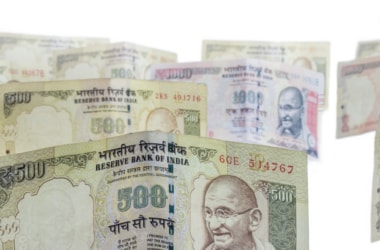 One last opportunity to deposit the 500- and 1,000-rupee notes that were banned in November will defeat the whole point of demonetisation as well as the battle against black money, according to the government of India. One last opportunity to deposit the 500- and 1,000-rupee notes that were banned in November will defeat the whole point of demonetisation as well as the battle against black money, according to the government of India.
The top court had asked the centre to consider a final window to benefit those with a genuine reason for not turning in the outlawed notes by the end of last year.
The deadline that was set by the RBI after Prime Minister Narendra Modi's shock announcement on demonetisation.
Different citizens' appeals were clubbed together by the Supreme Court.
But the government complained today of “the gross misuse or abuse” of previous extensions or exceptions that allowed old notes to be used to book railway tickets or at petrol pumps among others.
Allowing a new opportunity to deposit the banned notes would result in “any number of benami transactions” and make it difficult for departments to distinguish “genuine cases from bogus ones”, the centre warned.
The PM said the short notice was vital to ensure that black money holders were deprived of the opportunity to launder their money.
However, the RBI says it has still not determined the exact figure of the returned notes. By the end of December, banks had received virtually all the currency notes that had been banned - which implied that no black money had been destroyed.
INR 15.5 lakh crore was the value of the outlawed currency - about INR 15 lakh crore was accounted for in deposits by the end of 2016, said several reports.
The last official estimate from the RBI, shared in mid-December, pegged the returned notes at Rs. 12.5 lakh crore.
|
▼ India tops OECD Government at a Glance 2017 report [07-17-17]
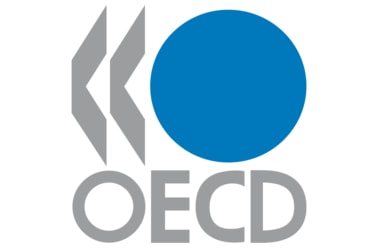 India has topped in the Organisation for Economic Co-operation and Development’s (OECD) Government at a Glance 2017 report. India has topped in the Organisation for Economic Co-operation and Development’s (OECD) Government at a Glance 2017 report.
It states that Narendra Modi led NDA coalition has secured 73% trust of people, highest in the world. OECD’s Government at a Glance report presents an index of countries that trust their governments the most.
It determines government’s trust levels by whether or not people consider their government stable and reliable, if it’s able to protect its citizens from risk and whether it can effectively deliver public services.
The Canadian government headed by Prime Minister Justin Trudeau was ranked second with confidence of 62% citizens.
Turkey was in third place with 58% of the populace placing its trust in the Reciep Erdogan government.
Russia and Germany were ranked fourth and fifth with confidence levels at 58% and 55% respectively.
US government led by President Donald Trump secured only 30% of the peoples’ confidence.
United Kingdom led by PM Theresa May secured 41% of the peoples’ confidence.
Greece was placed at the bottom of the list with a mere 13% of the people’s confidence.
The report states that government spending averaged 40.9% of GDP in OECD countries in 2015, up from 38.8% in 2007. In 2016, government spending as a share of GDP was highest in France with 56.5% followed by Finland (56.1%) and Denmark (53.6%).
It was lowest Mexico (24.5%), Ireland (29.5%) and South Korea (32.4%).
Organisation for Economic Co-operation and Development (OECD)
- OCED is an international economic organisation of 34 countries to stimulate economic progress and world trade Founded: 1961.
- It defines itself as a forum of countries committed to democracy and the market economy.
- It provides common platform for members to compare policy experiences, seek answers to common problems, identify good practices etc.
- Most OECD members are regarded as developed countries i.e. high-income economies with very high Human Development Index (HDI).
- Its headquarter is in Paris, France.
|
▼ India to export US crude for first time [07-12-17]
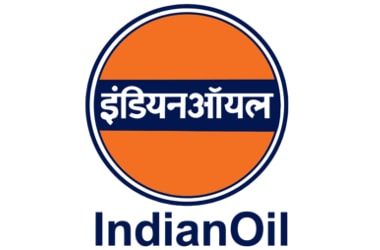 India, the world’s third-largest oil importer, will import crude oil from the United States for the first time after Indian Oil Corp bought a cargo that will be delivered in October. India, the world’s third-largest oil importer, will import crude oil from the United States for the first time after Indian Oil Corp bought a cargo that will be delivered in October.
The purchase comes after Prime Minister Narendra Modi’s visit to the US in June when President Donald Trump said his country looked forward to exporting more energy products to India.
IOC bought 1.6 million barrels of US Mars crude, a heavy, high-sulphur grade, and 400,000 barrels of Western Canadian Select that will be delivered onboard a Very Large Crude Carrier.
PetroChina was awarded the tender to sell the cargoes and is expected to load the oil off the US Gulf Coast, said a trading source with direct knowledge of the sale.
The cargo was priced on a delivered ex-ship basis, which is “very competitive” to that of Basra Light,
India is the latest Asian country to buy US crude after South Korea, Japan, China, Thailand, Australia and Taiwan.
Countries seek to diversify oil imports from other regions after the OPEC cuts drove up prices of Middle East heavy-sour crude, or grades with a high sulphur content.
Indian refiners are seeking these heavy, high-sulphur grades as feedstocks after modifications at their plants make it easier to process these types of crudes, which typically sell at a lower cost relative to other oil types.
The US could become an alternative source for the Indian companies for these grades.
A second Indian refiner Bharat Petroleum Corp Ltd also planned to buy its first ever US crude oil cargo and has issued a purchase tender.
BPCL: Know More
- Headquarters: Mumbai
- CEO: S. Varadarajan (30 Sep 2013)
- Owner: Government of India (54.93%)
- Revenue: 2.404 trillion INR (2015, US $36 billion)
- Founded: 1976
|
▼ Aaykar Setu - The new e-tax payer service module [07-11-17]
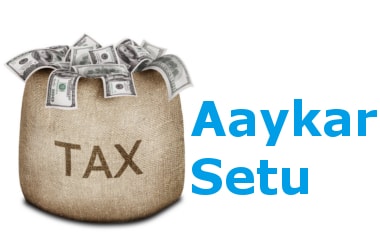 The Finance Ministry launches a new tax payer service module ‘Aaykar Setu’ that compiles various tax tools, live chat facility, dynamic updates, and important links to various processes within the Income Tax Department in a single module. The Finance Ministry launches a new tax payer service module ‘Aaykar Setu’ that compiles various tax tools, live chat facility, dynamic updates, and important links to various processes within the Income Tax Department in a single module.
This e-initiative would not only provide better taxpayer services but would also help in reducing the direct physical interface between assesses and tax assessing authorities.
To enhance mobile access experience, a mobile responsive android version was also released along with the desktop version.
This highlights the Government’s commitment towards continuously upgrading tax payer services.
This initiative will be minimizing the chances of any tax harassment.
The new step is an effort by the Income Tax Department (ITD) to directly communicate with the taxpayers, on a range of multiple informative and useful tax services aimed at providing tax information at their fingertips.
The module compiles various tax tools, live chat facility, dynamic updates, and important links to various processes within the Income Tax Department in a single module.
The tax payers will also be able to receive regular updates regarding important tax dates, forms and notifications on mobile numbers registered with the ITD.
All taxpayers who wish to receive such SMS alerts are advised to register their mobile numbers in the Aaykar Setu module.
The Central Board of Direct Taxes (CBDT) constantly endeavours to provide better taxpayer services and reduce taxpayer grievances.
New schemes and e-initiatives to educate the taxpayers and deliver tax payer services in an effective manner are key to this effort.
|
▼ J&K joins GST regime [07-10-17]
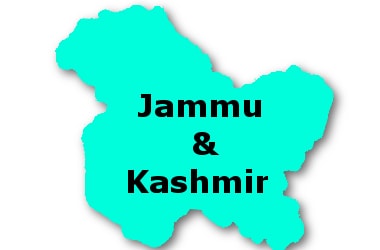 The President of India has promulgated today two ordinances, namely, the Central Goods and Services Tax (Extension to Jammu and Kashmir) Ordinance, 2017 and the Integrated Goods and Services Tax (Extension to Jammu and Kashmir) Ordinance, 2017. The President of India has promulgated today two ordinances, namely, the Central Goods and Services Tax (Extension to Jammu and Kashmir) Ordinance, 2017 and the Integrated Goods and Services Tax (Extension to Jammu and Kashmir) Ordinance, 2017.
This was for extending the domain of Central GST Act and the Integrated GST Act to the State of Jammu and Kashmir, with effect from 8th July, 2017.
With this, the State of Jammu and Kashmir has become part of the GST regime, making GST truly a “one nation, one tax” regime.
Earlier, the Goods and Services Tax was launched in the country from the midnight of 1st July, 2017.
However, because of the special provisions applicable to the State of Jammu and Kashmir extra steps had to be taken before the State could join the GST fold.
On 6th July 2017, the State of Jammu and Kashmir had taken the first step towards adopting the GST regime with the President of India giving assent to the Constitution (Application to Jammu and Kashmir) Amendment Order, 2017.
Resultantly, the One Hundred and First Amendment Act, 2016 to the Constitution of India that paved the way for introduction of GST in the country, became applicable to the State of Jammu and Kashmir also.
Following this, on 7th July, 2017, the Jammu and Kashmir Goods and Services Tax Bill, 2017 was passed by the State Legislature, empowering the State to levy State GST on intra-state supplies with effect from 8th July, 2017.
Concomitantly, the President of India has promulgated two ordinances, namely, the Central Goods and Services Tax (Extension to Jammu and Kashmir) Ordinance, 2017 and the Integrated Goods and Services Tax (Extension to Jammu and Kashmir) Ordinance, 2017.
|
▼ Key takeaways from GST masterclass! [07-7-17]
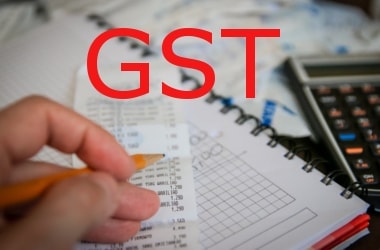 The government on July 6, 2017 conducted the first GST "masterclass" for all stakeholders including citizens. The government on July 6, 2017 conducted the first GST "masterclass" for all stakeholders including citizens.
These "masterclasses" are in the form of hour-long programs and will be held for six days.
Here are key takeaways from the first GST masterclass:
1) Registration on GST portal:
The government clarified that it is mandatory for the traders and dealers to complete the Part-B of their GST registration within the period of 90 days.
If an individual is not hands-on with online registration, then she/he can visit any excise, VAT or Service Tax office of state and central government where officials will get the job done.
There is no charge involved in this process.
Responding to a query on problems regarding registration of names bearing special characters (e.g. D'Souza or L&T), the government said that the software of the GST portal has been fixed to overcome the hiccup.
2) Updating details after registration:
The GST masterclass also discussed the updation of details of a business in the GST portal.
The government said that for minor details like bank account number, phone number, e-mail ID, updation can be done by the trader herself/ himself by visiting the GST registration portal.
However, modification like change in legal name of business, address of place of business, addition or deletion of partners or directors etc. can be done only by tax officials.
3) Exemption on turnover of INR 20 lakh
Trader class by now are well-versed with the fact that they are exempt from GST registration if their annual turnover is less than Rs 20 lakh.
However, the GST Council officials clarified that if a business involves inter-state supply, then GST registration is mandatory even if the turnover is below the threshold.
However, it was pointed out that if a business has a turnover below INR 20 lakh currently and happens to cross the threshold over time, then it needs to get itself registered within 30 days of it.
4) Items outside GST purview:
The Revenue Secretary on Wednesday reiterated the items which are outside the ambit of GST.
Following is the list of such products and the competent authority which can charge tax on them:
- 5 petroleum commodities- VAT can be levied by state government while excise duty by the centre government
- Stamp duty and registration charges- By state government
- Vehicle Tax- By state government
- Electricity Duty- By state government
- Potable alcohol- By state government
- Entertainment Tax- By state government in order to benefit local bodies
5) Miscellaneous- The provisional ID number received at the time of registration will be the same as the ID number received at the completion of registration.
- All registered dealers will have to furnish their GSTN registration numbers on signboards.
- In case, a dealer is facing problems in uploading Digital Signature Certificate (DSC), he/she can also opt to authenticate using an OTP (One Time Password) sent to his/her mobile number and e-mail ID.
|